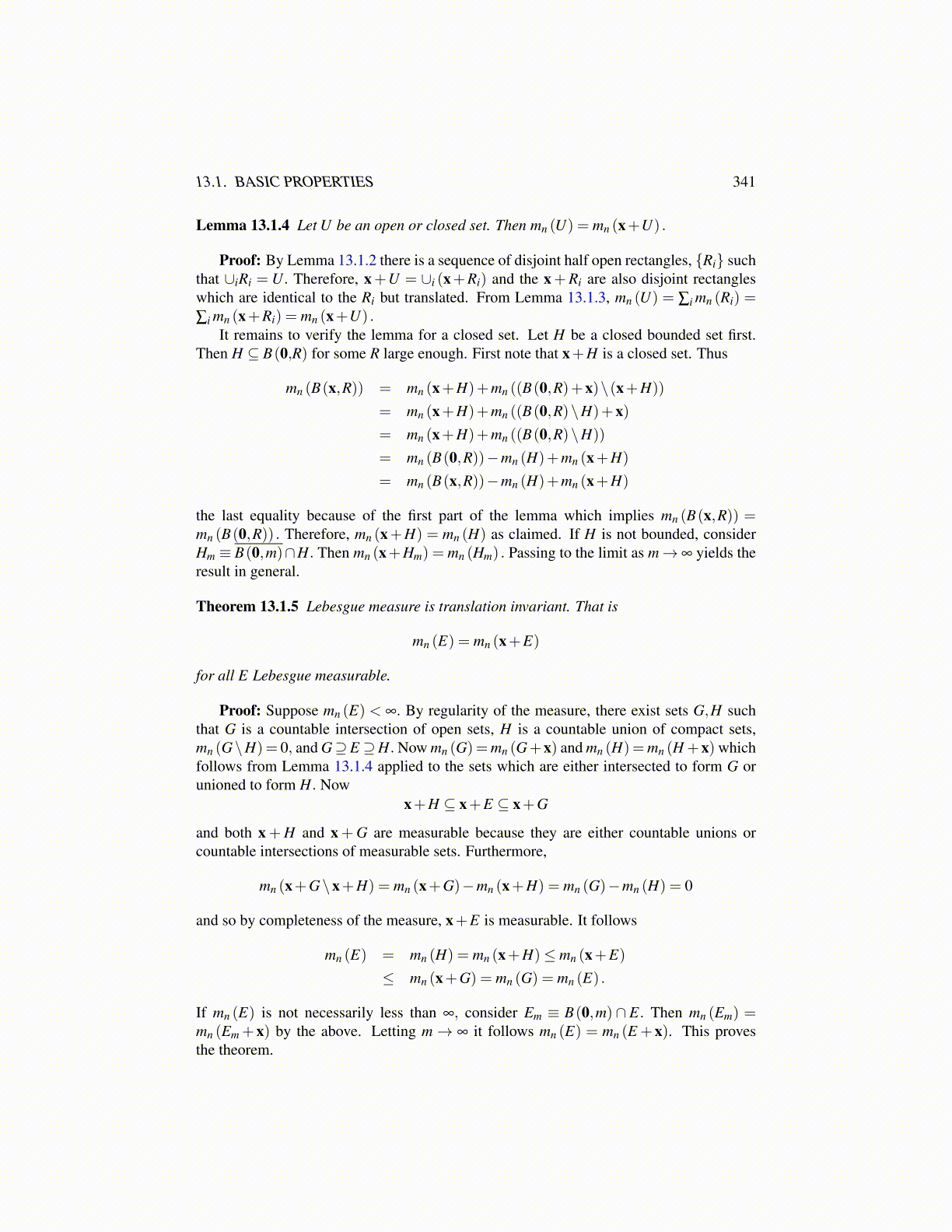
13.1. BASIC PROPERTIES 341
Lemma 13.1.4 Let U be an open or closed set. Then mn (U) = mn (x+U) .
Proof: By Lemma 13.1.2 there is a sequence of disjoint half open rectangles, {Ri} suchthat ∪iRi = U. Therefore, x+U = ∪i (x+Ri) and the x+Ri are also disjoint rectangleswhich are identical to the Ri but translated. From Lemma 13.1.3, mn (U) = ∑i mn (Ri) =
∑i mn (x+Ri) = mn (x+U) .It remains to verify the lemma for a closed set. Let H be a closed bounded set first.
Then H ⊆ B(0,R) for some R large enough. First note that x+H is a closed set. Thus
mn (B(x,R)) = mn (x+H)+mn ((B(0,R)+x)\(x+H))
= mn (x+H)+mn ((B(0,R)\H)+x)= mn (x+H)+mn ((B(0,R)\H))
= mn (B(0,R))−mn (H)+mn (x+H)
= mn (B(x,R))−mn (H)+mn (x+H)
the last equality because of the first part of the lemma which implies mn (B(x,R)) =mn (B(0,R)) . Therefore, mn (x+H) = mn (H) as claimed. If H is not bounded, considerHm ≡ B(0,m)∩H. Then mn (x+Hm) = mn (Hm) . Passing to the limit as m→ ∞ yields theresult in general.
Theorem 13.1.5 Lebesgue measure is translation invariant. That is
mn (E) = mn (x+E)
for all E Lebesgue measurable.
Proof: Suppose mn (E) < ∞. By regularity of the measure, there exist sets G,H suchthat G is a countable intersection of open sets, H is a countable union of compact sets,mn (G\H) = 0, and G⊇E ⊇H. Now mn (G) =mn (G+x) and mn (H) =mn (H +x) whichfollows from Lemma 13.1.4 applied to the sets which are either intersected to form G orunioned to form H. Now
x+H ⊆ x+E ⊆ x+G
and both x + H and x + G are measurable because they are either countable unions orcountable intersections of measurable sets. Furthermore,
mn (x+G\x+H) = mn (x+G)−mn (x+H) = mn (G)−mn (H) = 0
and so by completeness of the measure, x+E is measurable. It follows
mn (E) = mn (H) = mn (x+H)≤ mn (x+E)
≤ mn (x+G) = mn (G) = mn (E) .
If mn (E) is not necessarily less than ∞, consider Em ≡ B(0,m) ∩ E. Then mn (Em) =mn (Em +x) by the above. Letting m→ ∞ it follows mn (E) = mn (E +x). This provesthe theorem.